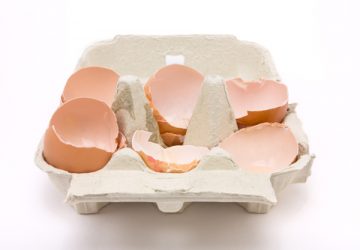As The Washington Times points out today, the gratuitous hype over mercury levels in fish is far from over. Flawed science journalism and an abundance of bad information from environmental groups and self-appointed food activists have “muddied the waters” surrounding mercury in fish.
As we’ve pointed out time after time, mercury-in-fish Chicken Littles like Oceana have made a mountain out of a molehill. And Oceana, with several other environmentalist groups, has consistently ignored the wealth of scientific evidence that exposes its “education” campaigns about the supposed “health hazards” from trace mercury in fish as tunnel-vision fantasies.
While Oceana and its scaremongering partners find new ways to disseminate their misinformation campaigns–wallet cards, faulty mercury calculators, and even mercury “guides” via text message– junk science journalism continues to lend a helping hand.
Despite the fact that a recent New York Times mercury-in-fish story has been debunked by a myriad of reputable sources (examples here, here, and here), smaller media outlets continue to play “follow the leader” by conducting their own tests of mercury levels in local fish–despite a lack of the necessary scientific resources and expertise. In the most recent example of this new fad, KOIN-TV News in Portland scared the bejeezus out of Oregonians with a false alarm about albacore tuna:
[New Seasons Market] pulled some local tuna after it tested at higher Mercury levels than expected … "We were really shocked to find out that it came in higher than what the industry is saying on the local Oregon Albacore tuna. Being that it’s a juvenile fish, they usually come in at .2 or .3. They came back at 7.33. These figures New Season’s Alan Hummel quoted are Mercury levels in parts per million that he says a Portland lab found in Oregon Albacore tuna. Lab manager Ken Ayers ran two tests that came back at seven, then nine parts per million of Mercury.
Oops – As the TV station’s own lab results show (click here and here), those readings should have been reported as 0.7 and 0.9 parts per million. Someone multiplied by ten, needlessly scaring countless consumers. (KOIN fixed its website just moments ago).
And when fish lovers aren’t being confused by scare campaigns or shoddy journalism, the self-appointed food activists we have come to know so well are, as usual, overjoyed to come to the rescue. Like Dr. Jane Hightower, who recently claimed in an interview with KPIX-TV in San Francisco that some of her patients “had non-specific symptoms,” which she attributed to “mercury toxicity.” (Dr. Hightower seems to think that the plural of “anecdote” is “data.”)
But as more credible experts like Harvard epidemiologist Dr. Dariush Mozaffarian recently told TIME magazine:
[T]he dangers of not eating fish [including tuna] outweigh the small possible dangers from mercury … probably only 10% to 20% of the population in the U.S. eats sufficient fish. The real danger in this country, the real concern, is that we’re not eating enough fish.




